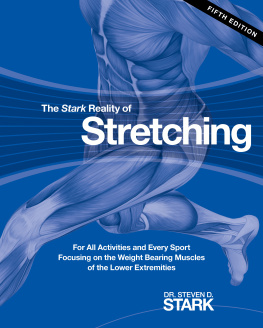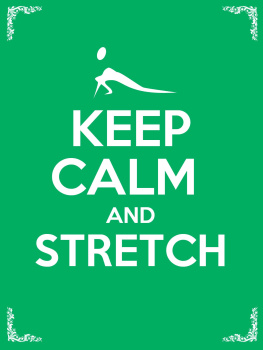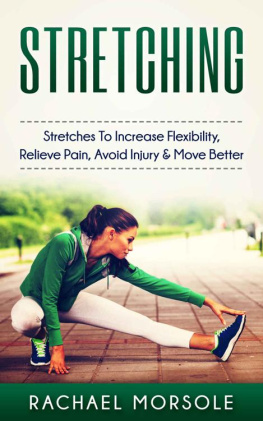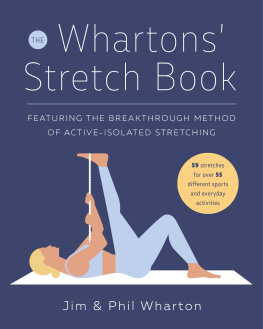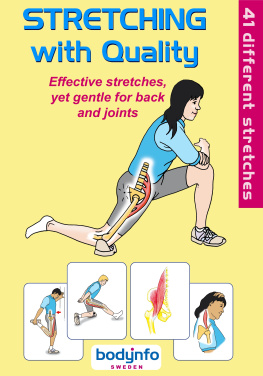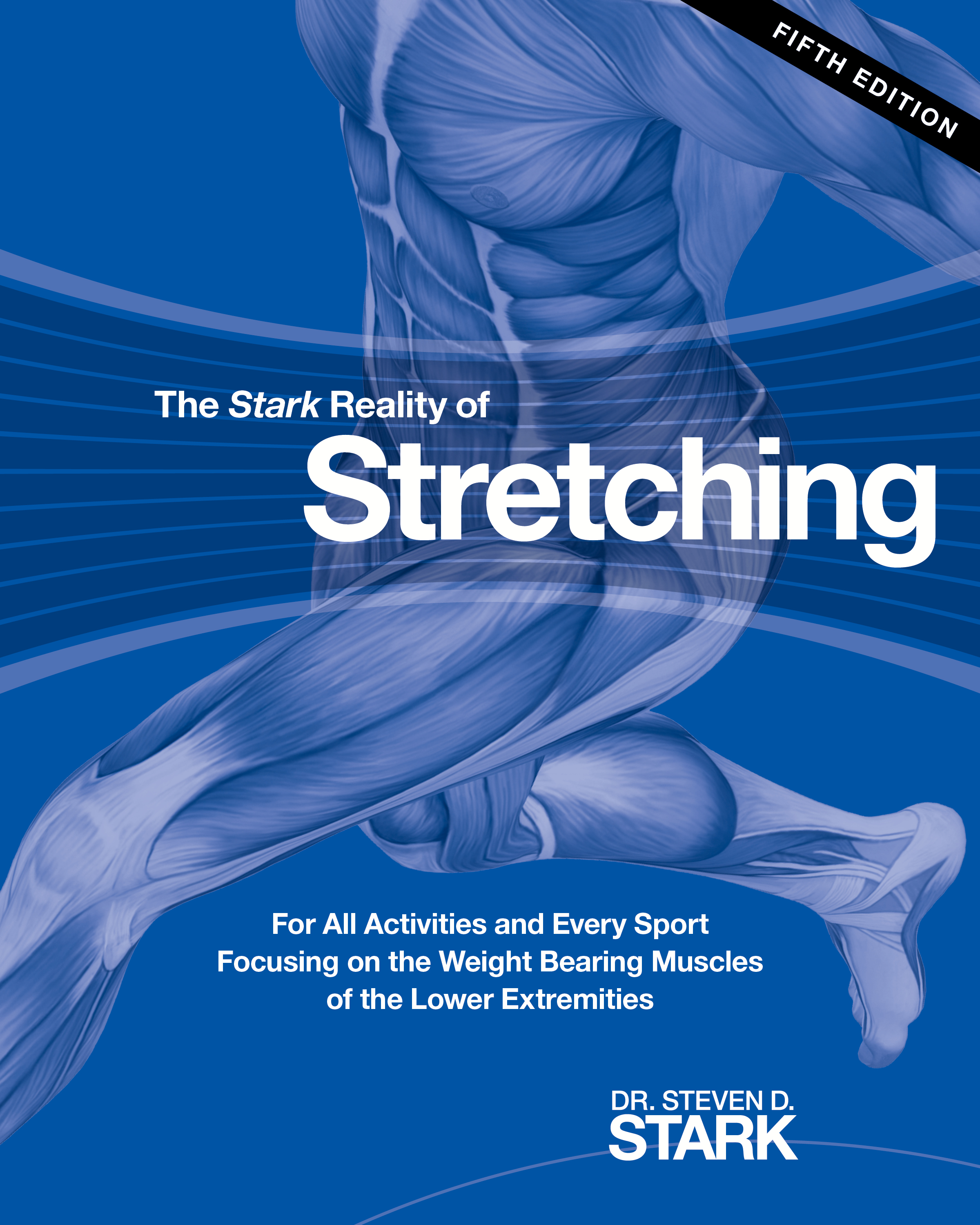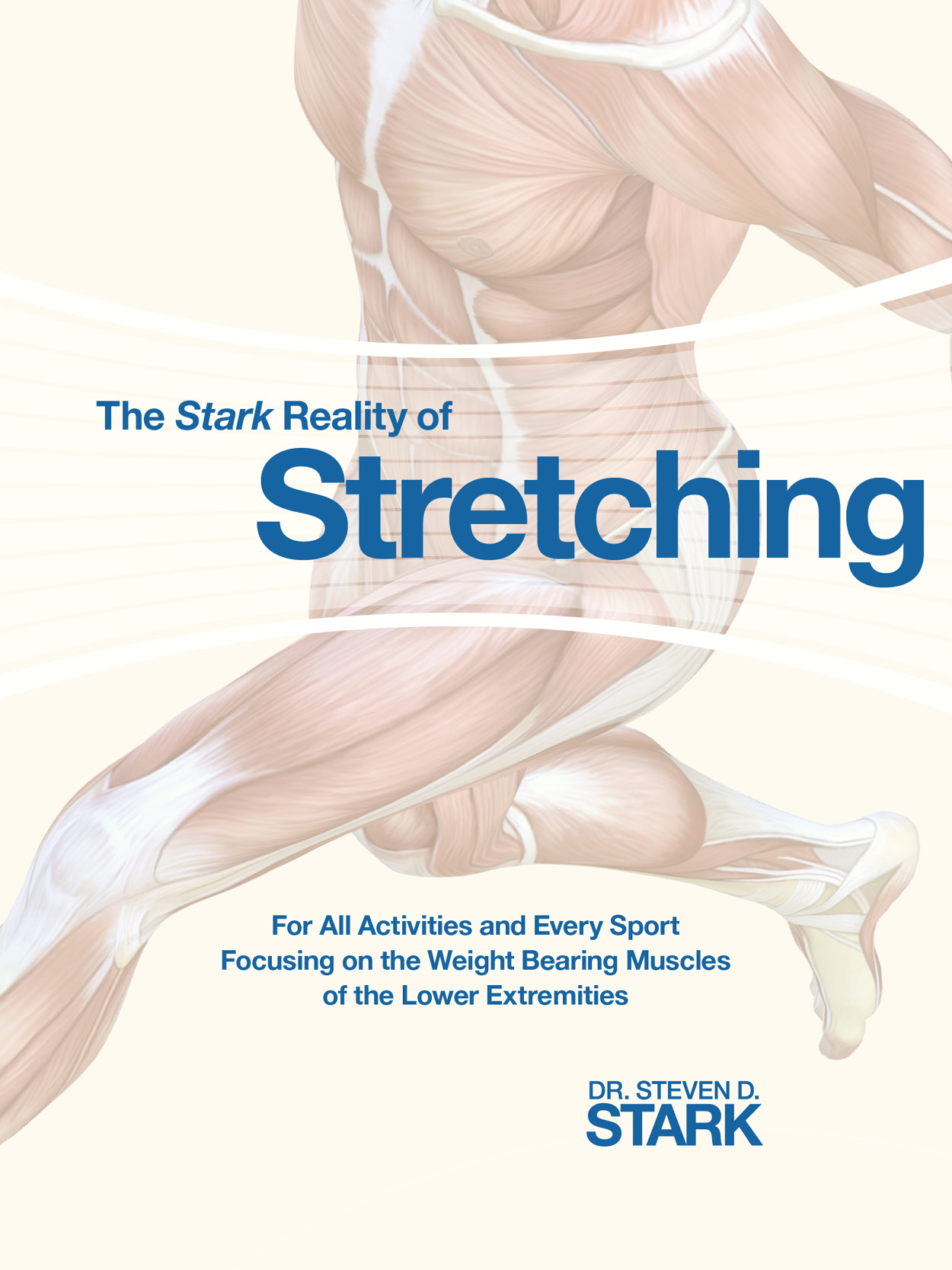Copyright 1997 Dr. Steven D. Stark
All rights reserved. No part of this publication may be reproduced without express written consent of the publisher, except in the case of brief quotations embodied in critical articles or reviews.
Canadian Cataloguing in Publication Data
Stark, Steven D. (Steven Daryl), 1948
The Stark Reality of Stretching: an informed approach for all activities and every sport.
5th ed., rev.
Includes Bibliographical references.
ISBN 978-0-9683607-5-0
1. Stretching exercises. 1. Title.
GV505.S72 1999 613.71 C99-901329-7
Editor: Diana C. Douglas,
Book Design and Production: Fiona Raven
Artist: Susie Morris
Title, Subtitle, Cover Design Concepts, and Editing: Sylvia Stark
First printing October 1997
Fourth printing, revised edition, October 1999
Fifth printing September 2006
Sixth printing April 2008
Seventh printing, fifth edition, June 2012
Dr. Steven D. Stark Podiatric Corp.
Suite 111-1959 152 Street
Surrey, B.C. Canada V4A 9E3
Phone 604-541-7666
Fax 604-541-7633
Email drstevenstark@telus.net
www.drstevenstark.com
Consult your physician before beginning any exercise or stretching program if you have any health problems or injuries. Before engaging in these stretches, read the entire book to become familiar with all the information. If you experience any pain while doing these stretches do not continue to stretch. See your physician before attempting the stretches again.
This publication is designed to provide accurate and authoritative information in regard to the subject matter covered. It is sold with the understanding that the author, publisher, editors, and distributors are not engaged in rendering medical or professional service.
Dedication
This book is dedicated to my partner in life, my biggest supporter, my harshest critic, my balance, my love my wife Sylvia.
Acknowledgements
My thanks to Diana Douglas, organizer and editor supreme, for her guidance in making this project a reality. The book design artist, Fiona Raven, has contributed greatly in making this book user friendly and effective. The illustrations give life to a difficult subject, thanks to our artist, Susie Morris. The continuing evolution of cover design and text is the computer magic of Betina Albornoz.
Thank you all.
Introduction
As an athlete I was always fascinated by how people moved. Watching people as they exercised and trained for a specific sport was an education in the diversity of the human body.
My interest in movement and function led to a career as a doctor. Although I completed a three-year surgical residency program after medical school, I have since dedicated my practice to focus on prevention and healing before the need for surgery. I am now a podiatrist specializing in sports medicine, biomechanics, and functional control. My expertise is in the structure and function of the lower extremities.
Every day in my clinic I see patients who are in pain:
- Children with restless leg syndrome and cramps often dismissed as growing pains.
- Teenagers and adults with chronic symptoms in the feet, knees, and hips.
- Why do so many teenagers who are basically healthy have poor posture and joint pain at such a young age?
- Seniors who are suffering aches and pains which are attributed to old age.
- Why do adults have increasing difficulty crossing their legs when sitting?
The answer is revealed in the study of the human gait cycle. Studying the proper sequence of joint motion and phasic muscle activity during walking or running, has led to an understanding of how muscle imbalances cause changes in the alignment and function of the lower extremities. These changes in the gait cycle result in muscle, ligament, and joint damage in everyone!
It explains why so many people have these problems simply doing normal daily activities without any sports involvement. Everyone develops muscle imbalances over their lifetime, simply because they take 8,000-10,000 steps a day.
Muscle imbalances develop because the weight bearing muscles of the hips and legs gradually shorten over time with repetitive usage and fatigue. These large muscles will remain shortened for the rest of our lives if stretches are not done routinely and correctly.
What to do? The answer seems obvious. Everyone should include stretches for the lower extremity muscles in their daily life. Indeed, many people do stretch faithfully. However, many of these people are stretching incorrectly. They gain no benefit, and often cause permanent damage to various structures of the body.
The tremendous growth of the fitness industry has overwhelmed us with personal trainers in fitness clubs, articles in magazines and newspapers, TV shows and DVDs on exercise and stretching. How can we distinguish between good information and bad? Where do we find current scientific facts, not personal opinions, in plain language anyone can understand and apply?
There has been an abundance of research done on how muscles function and the differences in the structure and function of muscles, tendons, and ligaments. However, this scientific data was hard to find and usually focused on the individual structures at the MOLECULAR LEVEL. This made the information too technical to be understood and translated into practical application by the average person.
We have operating manuals for our cars, DVD players, computersvirtually everything in our lives EXCEPT OUR BODIES!
The Stark Reality of Stretching is a comprehensive operators manual for the body. It provides the science, the anatomy, precise definitions, and the illustrations necessary for the proper application of that knowledge to help keep the body healthy.
When treating the functional and structural changes of my patients, I am convinced that stretching properly over their lifetime is vitally important. Stretching is not just for an athletes performance and injury prevention, it is how people can regain and maintain proper symmetry and length in the muscles that they use every step of their life.
The Stark Reality of Stretching provides a current and concise understanding of why we should stretch, WHAT A STRETCH IS , and of course how to stretch properly.
We hope you use this book in good health!
How To Use This Book
The book is divided into four sections:
Section 1
contains the science that is necessary to explain the differences in muscles, tendons, and ligaments. This section is vital to anyone who wishes to truly understand muscle function. Understanding muscle contractions and how a muscle elongates during a stretch at the molecular level will dispel many of the myths that we have all grown up with. Accurate definitions are essential for anyone trying to instruct other people on how to exercise and stretch without injury.
Section 2
contains a summary of related topics necessary for a total picture of proper training. Included are discussions on proper warm-up exercises, how to stretch, mistakes in stretches, and a summary of the most prevalent theories on stretching.
Section 3
is the application of the knowledge gained in Sections 1 and 2. Each major muscle group of the lower extremity is examined. The anatomy, biomechanics, and proper primary stretches are explained. Important landmarks for each muscle group are illustrated. In addition, the most common mistakes made in stretching each of these muscle groups is described, and the structures that can be damaged by these errors are illustrated.

